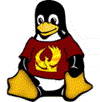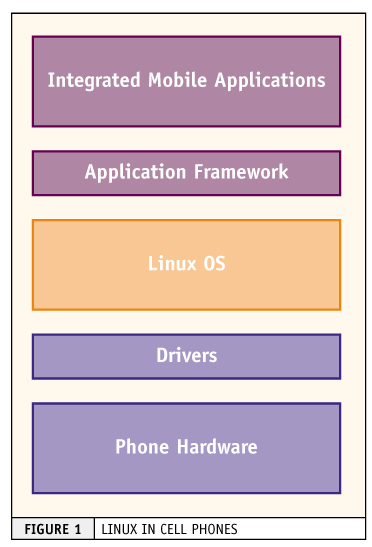|
|
DSC Tech Library
Linux Information
 This section of our technical library presents information and documentation relating to the Linux operating system especially as it relates to the telecommunications and Linux CRM Software marketplace.
Since the Company's inception in 1978, DSC has specialized in the development of software productivity tools, call center applications, computer telephony integration software, and PC based phone systems. These products have been developed to run on a wide variety of computer systems and have been tested and operational on LINUX servers and systems. The following are articles and information regarding Linux and its applications in the telecom and business environments.
This section of our technical library presents information and documentation relating to the Linux operating system especially as it relates to the telecommunications and Linux CRM Software marketplace.
Since the Company's inception in 1978, DSC has specialized in the development of software productivity tools, call center applications, computer telephony integration software, and PC based phone systems. These products have been developed to run on a wide variety of computer systems and have been tested and operational on LINUX servers and systems. The following are articles and information regarding Linux and its applications in the telecom and business environments.
Riding the Open Innovation Wave with Linux
December 22, 2003
by Kevin Bedell LinuxWorld
Innovation is the lifeblood of the technology industry. With every new technical innovation comes a whole new crop of companies riding the wave of change as they try to build companies (and sometimes even whole industries) out of the Next Big Thing.
Ask Thomas Reardon of Openwave Systems about Linux and innovation and he'll have some pretty strong opinions. And he should know - in fact, Reardon (as he's known) was selected this year as one of the World's Top Young Innovators by Technology Review, MIT's magazine of innovation.
Technology Review's Top Young Innovators list reads like a who's who of technical innovators from around the world. These are the kind of people who figure out how to diagnose cancer more accurately, achieve breakthroughs in quantum computing, or invent new high-efficiency engines. One person on the list even figured a way to use the GPS system to guide tractors within 3 centimeters of their intended path.
Reardon was recognized for being at the center of a number of major software innovations over the last 10 years. For one thing, he at one time was Microsoft's entire Internet Explorer development team. He ended up being at the center of the development of a number of Internet standards and was a member of the World Wide Web Consortium (W3C) from 1997 to 2000. Previous to that he played a central role in Microsoft's efforts to design and build networking software to compete with Novell.
Reardon now works with Openwave Systems, Inc., as VP and general manager of their Client Products group. His ideas now revolve around how to create innovative products for mobile phones to help Openwave compete in the extremely competitive market for mobile phone software.
Where Does Linux Fit In?
Which brings us, finally, to Linux. Reardon - the former Microsoft guy - is now one of Linux's biggest fans. I had a chance recently to spend some time with Reardon to talk about it.
"In five years, all cell phones will run Linux," he says once we get talking. This is a pretty brash statement considering that right now virtually none of them do.
He's convinced that all cell phones will run Linux for the same reasons most Linux users today use it for other things. In short, Linux is reliable, highly portable between different hardware platforms, and has a huge, world-wide developer following.
To get an idea how Linux fits in the cell phone picture, consider Figure 1.

At the bottom of the figure is the phone hardware. Directly above the phone hardware is a set of drivers that allow Linux to run on the phone and control it. Directly above the drivers is Linux. This implies that Linux can be ported to a new piece of phone hardware (and, yes, I'm simplifying a bit) by simply writing a new set of drivers to "port" Linux to the new phone.
Now let's revisit this diagram from the top down. At the top of the figure is a set of integrated mobile applications. These are the applications you'll use with your phone. They'll allow you to take and send pictures, to store addresses, to download and listen to music, to browse the Internet - and to do a host of other things we haven't thought of yet.
Just below the integrated mobile applications is an application framework. The application framework is really a programming toolkit that software developers will use to create the applications with. One of Openwave's primary products is an application framework called Openwave Phone Suite that sits on top of Linux inside mobile phones. And this is why Reardon is now such a big fan of Linux.
"Handset user experiences available today lack the capabilities of most phone hardware," according to Reardon. "Linux closes that gap by opening innovation and freeing manufacturers to compete."
In short, Linux accelerates innovation by giving phone manufacturers a stable, powerful operating system in the phone that enables application frameworks such as the Openwave Phone Suite to exist.
Application Portability Is Huge
Another big advantage in using Linux is how easy it is to port applications between phones. Cell phones, unlike PCs, vary widely in their hardware designs from one to the next. According to Reardon, "Going from a Mac to a PC adds a lot of complexity to operating system development. Macs are all identical and manufactured by one vendor, while PCs are much more varied and have many different components from different vendors. Well, going from a PC to a cell phone is even more of a jump since each handset is so different."
Given the extreme variation in the underlying phone hardware from one phone to the next, porting applications built for one phone to another has been a big challenge. Linux helps to tame all this in a big way.
Here's how it all works. To begin with, a cell phone manufacturer (for example, NEC or Motorola) first provides a cell phone with the Linux operating system installed on it. One common choice is to use MontaVista Linux Consumer Electronics Edition. This Linux distribution is tuned for embedded devices and provides the base on top of which the Openwave application framework is built.
Because the Linux distribution chosen provides support for many of the same capabilites a PC has, Openwave now has a full-featured operating system and development environment to work in. For example, MontaVista Linux provides the same or similar graphics, networking, and file system support as does any other Linux distribution.
Since Linux brings so much to the phone already, Openwave can port its application framework to new cell phones relatively quickly and inexpensively.
As a result, the cell phone manufacturers can spend much more time creating mobile applications instead of having to focus on writing software to control a display or manipulate files.
It's difficult to understate the impact of having Linux available on a phone. I remember almost 20 years ago when I got out of college my first job as a developer was writing embedded applications. We used assembly language and wrote the code on a Digital Equipment Corporation Vax computer. We then burned the code into chips called EEPROMS and installed them in the devices we were writing the code for. My debugging tools were (and, no, I'm not joking) a VT-52 dumb terminal, an Electronics Technician, and an oscilliscope. We never even imagined having something as powerful as Linux to develop applications with.
Why Linux Accelerates Innovation
Linux gives you so much power and such a well-developed environment that the productivity of the knowledge workers creating the applications speeds up dramatically. This helps application ideas get developed much faster. It also makes things possible that simply weren't before because they would've taken so long to implement.
In addition, the stability of Linux frees programmers to focus on application development without having to spend as much time worrying about software defects. And because the same development environment and operating system run on every phone, the time needed to take an application developed for one phone and move it to another has dropped dramatically.
All these things combine to increase the speed at which new features can be developed and, hence, the overall innovation rate.
The Future of Linux and Cell Phone Technologies
According to Reardon, cell phones and Linux will be one of the hottest areas for innovation for the next several years.
"In this industry, almost all the innovation is happening at the level of the cell phone. Some people are saying that PDAs are going to get more capabilities and continue to shrink until they replace phones. I think the opposite is occuring; cell phones are becomming more and more powerful and will replace a lot of the Palms and WinCE devices people are carrying now as their capabilities expand."
He is also convinced that other companies are seeing the same thing. He says, for example, that "Sharp and the other leading display technologies manufacturers are releasing their most advanced technologies on phones first, then moving them up to other platforms." He sees these trends as indicating that the cell phone will stay one of the hottest areas for innovation for some time.
Given Reardon's record of finding his way to the center of innovation in the past, it's a good bet he knows what he's talking about.
About the author
Kevin Bedell is Editor-in-Chief of LinuxWorld Magazine. He holds a BS in Engineering from Michigan Tech and an MBA from The Crummer Graduate School of Business at Rollins College. Kevin is a seasoned software professional who has co-authored books for SAMS and O'Reilly Associates and who writes and speaks on Linux, Open Source and other Software Development topics.
|


 This section of our technical library presents information and documentation relating to the Linux operating system especially as it relates to the telecommunications and Linux CRM Software marketplace.
Since the Company's inception in 1978, DSC has specialized in the development of software productivity tools, call center applications, computer telephony integration software, and PC based phone systems. These products have been developed to run on a wide variety of computer systems and have been tested and operational on LINUX servers and systems. The following are articles and information regarding Linux and its applications in the telecom and business environments.
This section of our technical library presents information and documentation relating to the Linux operating system especially as it relates to the telecommunications and Linux CRM Software marketplace.
Since the Company's inception in 1978, DSC has specialized in the development of software productivity tools, call center applications, computer telephony integration software, and PC based phone systems. These products have been developed to run on a wide variety of computer systems and have been tested and operational on LINUX servers and systems. The following are articles and information regarding Linux and its applications in the telecom and business environments.
